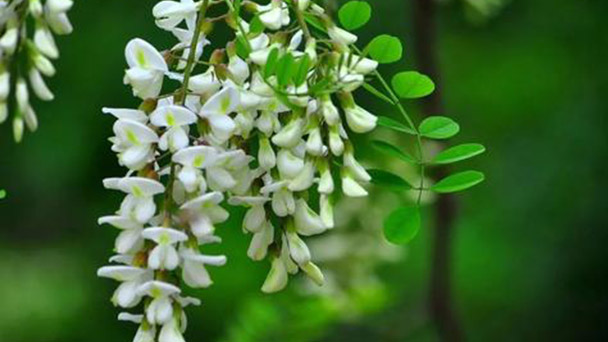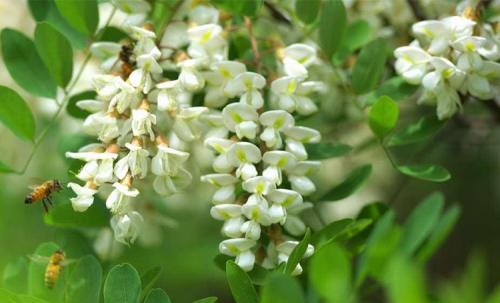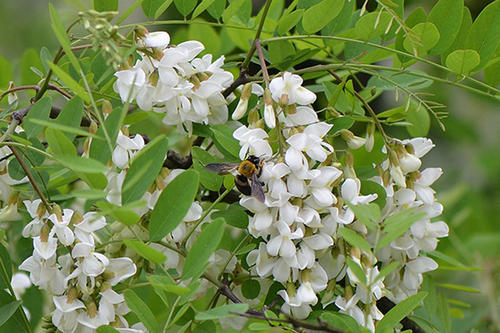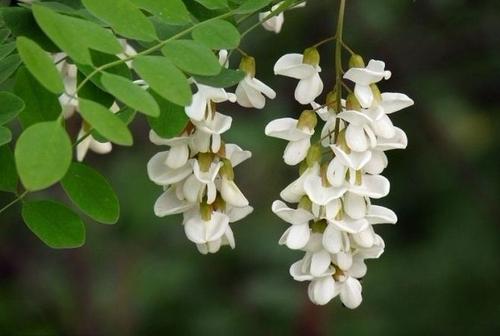Japanese Pagoda Tree Profile
Written by Maggie
Nov 01 2021

Japanese Pagoda Tree, scientific name, Styphonlobium japonicum, is the flower and bud of the leguminous plant locust. Japanese Pagoda Tree is a locust deciduous tree, often planted in the house side, roadside, widely cultivated throughout the country.
Collect when summer flowers open or bud forms, dry in time, remove branches, stem and impurity, collect and dry.
Japanese Pagoda Tree picture

Japanese Pagoda Tree Characteristics
Japanese Pagoda Trees (Styphonlobium japonicum) are shriveled and curled with scattered petals. The is calyx intact campanulate, yellow-green, apex 5-lobed; Japanese Pagoda Tree has 5 petals, yellow or yellow-white, 1 larger, suborbicular, apically concave, the remaining 4 oblong. It has 10 stamens, 9 of which are basally conjoined, filaments slender. Pistils are cylindrical, curved. The breath is slight, the taste is slightly bitter.
Japanese Pagoda Tree (locust) is a polymorphic flower with a raceme and a butterfly-shaped corolla that forms clusters and overhangs when in bloom. The florets are more wrinkled and curled, the petals are more scattered, the complete calyx is bell-shaped, yellow-green, apex 5 lobed;Petals 5, usually yellow or yellow-white, with other colors such as purplish red (see picture), usually 1 larger, suborbicular, apically concave, and the remaining 4 oblong; Japanese Pagoda Tree has 10 stamens, of which 9 basally united, filaments slender; Pistils are cylindrical, curved. This entry mainly introduces the flowers of the leguminous plant locust, the introduction of the plant locust please see the entry locust, the introduction of the flower buds of locust please see the entry locust rice, and other Chinese medicine related to locust can see locust.
Locust is a deciduous tree with a height of 8-20m. Bark is grayish brown, with irregular longitudinal crack, bright yellow endothelium, stink; Branchlets are dark green brown, nearly smooth or have short fine hairs, lenticels obvious. Odd present compound leaves, alternate, 15 -- 25cm long, axles hairy, base enlarged; Japanese Pagoda Tree has 7-15 leaflets, petiole ca. 2mm, densely white pubescent; Stipules are falcate, caducous; The leaf blade is ovate-oblong, 2.5 -- 7.5 x 1.5 -- 3cm, apex acuminate apiculate, base broadly cuneate, entire, upper green, slightly bright, abaxially whitish short hairs. Panicles are terminal, 15 -- 30cm long; The calyx is campanulate, 5-lobed; The corolla is butterfly-shaped, milky white, flag broadly heart-shaped, with short claws, purplish veins, wing and keel are rectangular; 10 stamens are separate, unequal; In atrial cylindric, with fine hairs, style curved. Pod is fleshy, beadlike, 2.5 -- 5cm long, yellow-green, glabrous, not dehiscent, very finely contracted between seeds.Seeds 1-6, reniform, dark brown. Flowering period is from July to August, fruiting from October to November.
Japanese Pagoda Tree Growing Conditions
Japanese Pagoda Tree (Styphonlobium japonicum) is a temperate tree, like light, like cold and dry climate, but can also grow in the high temperature and humidity of southern China. It requires deep, well drained soil, calcareous soil, neutral soil and acid soil can grow in dry, poor growth in the low-lying areas. Japanese pagoda trees can withstand smoke and dust, and adapt to the urban environment. It has deep roots, not strong germination, medium growth, long life.

Japanese Pagoda Tree Distribution
Japanese Pagoda Tree (Styphonlobium japonicum), originally produced in the north of China, especially in the Loess Plateau and northeast, North China Plain is the most common, the north and south of China is widely cultivated. It is also found in Japan, Korea and Vietnam.
Japanese Pagoda Tree Benefits
Nutritional value of Japanese Pagoda Tree
Japanese Pagoda Tree contains carbohydrate, fat, thiamine, niacin, calcium, protein, iron, riboflavin, phosphorus, carotene, vitamins, cellulose, vitamins and other elements.
The edible effects of Japanese Pagoda Tree
Japanese Pagoda Trees (Styphonlobium japonicum) can cool blood and stop bleeding, clear liver, decrease internal heat, anti-inflammatory, anti-edema, anti-ulcer, lower blood pressure and other effects.
Japanese Pagoda Tree Meaning
Japanese Pagoda Tree's flower language and cultural implication is related to its appearance characteristics, Japanese Pagoda Tree blossoms in white color, elegant and refined as snow. So its flower language is beautiful yearning, which contains a yearning for good and pure love, but also a kind of the most wonderful emotion.

Latest Updated
- Benefits of Bugleweed - 7 Science-backed Health Benefits
- Bugleweed Dangers & Side Effects - Is It Poisonous?
- How to Plant Evergreen Trees - What You Should Know
- When to Plant Evergreens - Grow Guide for Evergreen Trees
- 12 Wonderful Evergreen Shrubs for Your Garden
- 12 Popular Evergreen Plants with Pictures for Beginners
- When And How To Prune A Lilac Bush Like a Pro
- How to Grow & Care for Lilac Vine (Hardenbergia Violacea)
- Japanese Lilac Tree (Syringa Reticulata) Care & Propagation Guide
- Shumard Oak Pros and Cons - What to Know
Popular Articles
- Winter maintenance of Antirrhinum Majus
- How to Grow Terminalia Mantaly Tree
- How to Grow and Care for Crossostephium Chinense
- How to grow Antirrhinum Majus in spring
- Peristeria Elata (Dove Orchid) Profile: Info & Care Guide
- Underwatered Snake Plant (Sansevieria Trifasciata) - Signs And How To Fix
- How to Care for Brazilian Jasmine Plant (Mandevilla Sanderi)
- How to Grow & Care for Graptopetalum Purple Delight in Summer
- Rosa Chinensis (China Rose): Plant Growing & Care Tips
- How to Care for Baby Sun Rose (Aptenia Cordifolia)